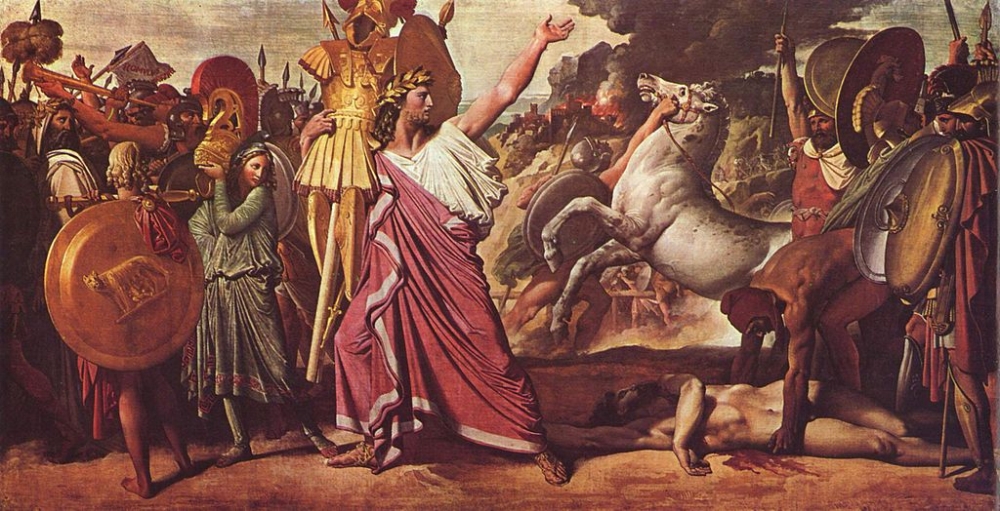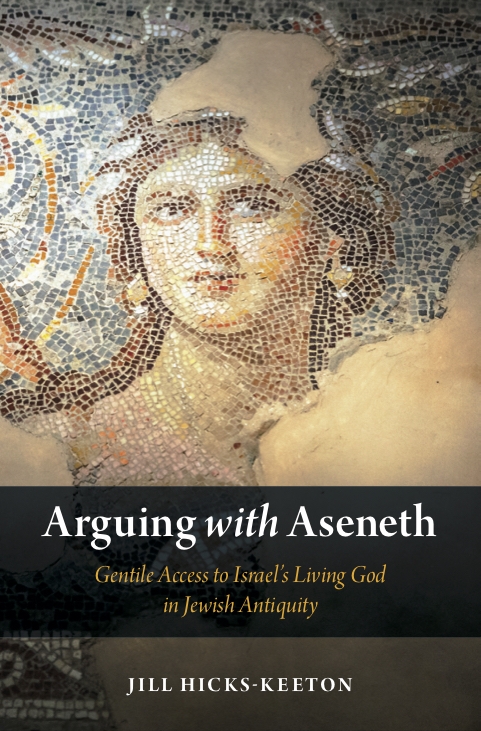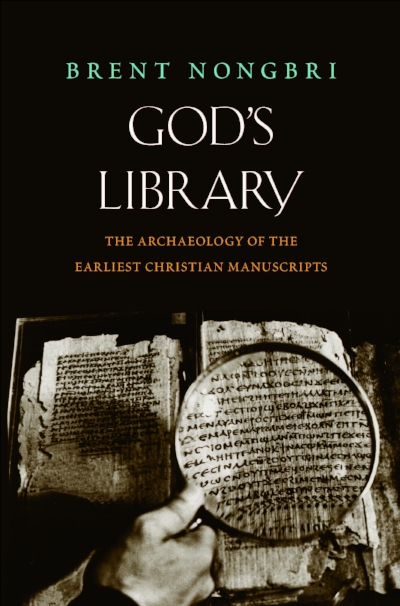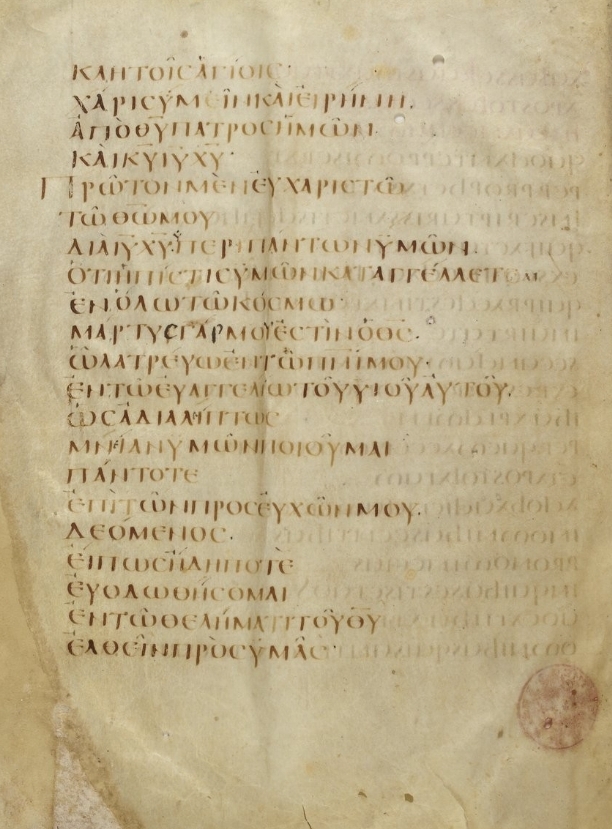In my dissertation, I group twelve authors by chronology and language of writing. Chapter two treats Velleius Paterculus (d. 31 CE), Tacitus, and Suetonius (d. 126 CE), three authors separated by time, genre, rank, and aims, but unified in their approach to imperial history as in certain respects a recapitulation of regal history; determined by the ancestry of the Julio-Claudian emperors.
Read MoreTeaching Hebrew Bible with Creative Writing
“The Bible is, and will likely long continue to be, both building material and building. It’s a treasury of the ancient world, a storehouse in which lie a large percentage of the glittering gems which survived the ancient Levant in any form. And it’s a doorway through which the ancient Levant continues to shape the present, as well as the history of how this heritage has been repeatedly reshaped and by whom.”
Read MoreAmalasuintha: The Transformation of Queenship in the Post-Roman World
Unlike these Gothic queens, Amalasuintha was more than an instrument of diplomacy: she was diplomacy, a ruling mother who dealt with legates directly, without an interpreter since she knew so many languages
Read MoreGospels Before the Book
Ignoring, or at least unaware of, the disjointed discourses about gospel textuality and authorship within the first centuries of the Common Era, modern historians of ancient Christianity speak about first century gospel texts in ways unknown in the first and second century discourses about the gospel.
Read MoreDissertation Spotlight | Daniel Picus
“I argue that that the rabbis are deeply concerned with the form, format, and divisions of the biblical text, and that these aspects of the text have a crucial role in rabbinic understandings of the formation and transformation of the reader.”
Read MoreAncient Jewish Identity
“In Judaism, as we saw, a bad Jew was still a Jew. The belief in shared ancestry was the anchor that permitted some to drift without breaking loose.”
Read MoreResurrection: Why, how, and for whom?
By shifting away from the relationship between resurrection and embodiment, I read “behind” or at least “around” the flashpoints surrounding the nature of the resurrected body.
Read MoreDuke/UNC CLAS Symposium Report | De Malo: Evil and Theodicy in Late Antiquity
This year’s conference took up discourse about evil in late antiquity as a test case. Might the ever-pressing issue of theodicy provide a topic on which authors of various late ancient pieties could both demonstrate their commonalities and distinguish their competing claims?
Read MoreDissertation Spotlight | Sarah Emanuel, "Roasting Rome"
As the title of this project suggests, Revelation “roasts” Rome—both humorously and via imagined incendiary flame (see Rev. 17:16; 18:8)—to the extent of creating a new world order in which the implied Jewish Other reigns supreme over and against the Roman imperial order.
Read MoreCovenant without Circumcision? What to Do with a Woman
The character of Aseneth becomes transformed from material mother of the sons of Joseph to mythic mother-figure for the tribes of Israel and penitent nations who join in worshiping Israel’s God.She has become, in this ancient tale, a productive site of intervention in Israel’s story—a matriarch who matters in the history of and for the future of God’s covenanted community.
Read More“Not Veiled in Silence”: The Challenge of Writing about Early Christian Women
How did women of various regions, backgrounds, situations, and temperaments assume authority, exercise power, and shape both their legacy and the legacy of Christianity?
Read MoreA Wandering Jew: Some Reflections
Erich Gruen with a retrospective of his work: “If a consistent thread runs through my studies of Jewish history in the context of classical antiquity, it can be found in resistance to the common portrayal of Jews as victims.”
Read MoreA Manuscript of Exodus Wandering in the Wilderness
Ancient manuscripts are more than just carriers of texts. They are archaeological artifacts and deserve to be studied as such.
Read MoreCharting the Course: Using Maps for Pedagogical Progress
Borders change, today and throughout history. Incorporating maps into the classroom encourages the students to view this for themselves and to begin to understand the myriad of ways that politics shapes geographical borders.
Read MoreDissertation Spotlight | Scribal Habits in Selected New Testament Manuscripts, Including those with Surviving Exemplars
At the core of the dissertation, three chapters analyze the scribal habits of the copyists of various manuscripts.
Read MorePerforming Apocalyptic Texts: Teaching the Eschatological Banquet from the Dead Sea Scrolls
The Wedding Banquet of Cupid and Psyche (1517) by Raphael. Villa Farnesina, Rome
The Wedding Banquet of Cupid and Psyche (1517) by Raphael. Villa Farnesina, Rome
“Performing the banquet shifted their analysis from the realm of the academic into the realm of something that is socially functional, assisting with student thinking about the ancient texts as representative of real people and their actions and beliefs.”
Read MoreHarnessing Creativity in a Biblical Studies Classroom
If Esther had a Pinterest, what would she post on it? If Ruth had a Spotify playlist, what songs would she include? What if Susannah joined the #metoo movement?
Read MoreDissertation Spotlight | The Apophthegmata Patrum and the Greek Philosophical Tradition
Instead of only studying one particular practice, I have taken the monastic path of life as a whole, as proposed by the Apophthegmata Patrum, from conversion to advanced practice, and analyzed it light of the philosophical schools.
Read MoreLamenting a Broken World: Student Learning Through Creative Writing
In this creative assignment, students were empowered to engage with the biblical text in new ways: they understood some of the ways that biblical texts can relate to the modern world and vice versa, they used their own creative voices, and they reflected critically on why we must develop awareness of moments of pain and trauma in the world around us.
Read MoreOn Taxonomy and Classification: A Response
Throughout Classifying Christians, I proposed that Christian polemical ethnographers were operating both like physicists and anthropologists. In getting closer to the heretics—whether through personal or textual experience—the heresiologists actually made the terms of Christian culture both more and less clear.
Read More















![Gherardo Starnina - Thebaid, ca. 1420, Tempera on wood (Wikimedia Commons) [Sometimes attributed to Fra Angelico]](https://images.squarespace-cdn.com/content/v1/5449167fe4b078c86b41f810/1534121418493-UZ3BXHO6ZL8M70BB8Q17/Angelico%2C_tebaide.jpg)
![Southwest Texas McAllen Border Fence, Rio Grande Valley [ Photographer: Donna Burton ]](https://images.squarespace-cdn.com/content/v1/5449167fe4b078c86b41f810/1533738883693-XLDP3WL924ZNTV91Z2EM/32860951106_bc66460846_z.jpg)
